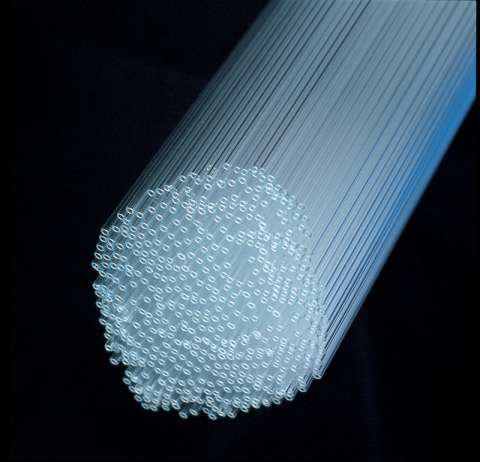|
Electrical properties determine how much noise the
glass is likely to produce in recording situations. The lower the product
of dielectric constant times the loss factor, the smaller the equivalent
noise current the glass will produce (Rae
and levis, Methods in Enzymology, 207, p67, 1992).
Patch clamp glass with good electrical properties is critical especially
in single-channei recording.
Sealability: It is not clear what factors determine
the sealing ability of the patch to the glass. Almost any glass can form a
gigohm seal under the right conditions. Different glass types very,
however, in how easily they form a seal. It is important to select a patch
clamp glass that seals easily. Good fire polish is critical for seal (see DMF1000).
Leachable components: Substances leached from glass
can alter channel behavior. Since different channels are sensitive to
different glass components, it is best to record one type of channel with
several different kinds of pipette glass to eliminate any artifact due to
the glass. WPI offers capillary tubing made from two glass types
widely used in constructing patch clamp electrodes. The significant
characteristics of each are as follows:
PG52151-4, PG52152-4 and PG52165-4 are
prepared from Schott#8250 glass (equivalent
to Corning #7052),one
of the most widey used patch clamping glasses. This is a specially
formulated borosilicate glass with a softening temperature that is 110°C
lower than regular borosilicate glass (Corning
7740, or Pyrex).
It has excellent sealing properties for most cells. Electrical properties
are also very good.
PG10150-4 and PG10165-4 are composed of
Corning #0010 glass, a high lead content (22%PbO)glass. lts thermal and electrical performance is
between the Schott #8250 and Corning #8161 glasses described above. It is
much more economical than Corning #8161 glass. It has been found that this
glass causes much less alteration in channel behavior than Corning #8161
and Schott #8250 glass (Furman
and Tanka, Biophys. J. 53, p287, 1988).
Patch clamp capillaries do not have microfilaments.
|
PATCH CLAMP CAPILLARY GLASS |
||||
|
Catalog# |
Glass Type |
OD/ID (mm) |
Dielectric
Constant |
Softening
Point°C |
|
PG52151-4 |
#8250 |
1.5/1.0 |
4.9 |
720° |
|
PG52152-4 |
#8250 |
1.5/0.9 |
4.9 |
720° |
|
PG52165-4 |
#8250 |
1.65/1.1 |
4.9 |
720° |
|
PG10150-4 |
#0010 |
1.5/0.75 |
6.7 |
625° |
|
PG10165-4 |
#0010 |
1.65/1.1 |
6.7 |
625° |

